Geographical Index > United States > Mississippi > Lamar County > Report # 77455
(Class B)
Submitted by witness Cliff Smith on Wednesday, July 10, 2024.
IMPORTANT BEHAVIOR PATTERNS: Handful of Class B (knocks, thrown objects, etc.) on Black Creek 4.5mi N of Purvis
(Show Printer-friendly Version)
YEAR: 2012
SEASON: Summer MONTH: August DATE: Aug-Dec 2012 STATE: Mississippi COUNTY: Lamar County LOCATION DETAILS: Behind an old HESS refinery, along Black Creek
[Investigator (MM) notes:
The GPS coordinates for the wood throwing incident:
31.207758,-89.405929
All of the other incidents occurred within a half mile of this point along Black Creek. This is unoccupied, corporation-owned private land that is leased to hunters.] NEAREST TOWN: Purvis, Mississippi NEAREST ROAD: Old highway 11 OBSERVED: In late August of 2012, my wife and I were riding a four wheeler around some woods in a hunting club I was in at the time. We had rode down a river as far as we could, and came upon a swamp. I unloaded to look around. After a few minutes of walking the edge, a large pine root weighing around 150 lbs crashed through the tree canopy and landed about 15 feet in front of me. I witnessed the trajectory as it went up probably 45 feet in the air before coming down. I also noted no sane person would be in the middle of a swamp that time of year.
Then again in mid November, my son and I were deer hunting in the same general area and heard a series of loud knocks coming from the direction of the same swamp. We returned the knocks and in turn, got a response. It was too slow to be a woodpecker, the only thing down here that knocks on trees.
Then later in December, I was alone hunting on the western edge of the same swamp. I heard something large splashing in the water for over an hour. Only beaver do that here in the winter, and this sounded 400 or 500 pounds. The lease has since changed hands, and I no longer have access to it. This has been on my mind for a while and I needed to get it said.
ALSO NOTICED: Nothing I can remember. OTHER WITNESSES: My wife once, my son once. OTHER STORIES: None I have heard of. TIME AND CONDITIONS: Late afternoon between 4 and 6 pm ENVIRONMENT: Swamp in a oak bottom with heavy pine around it
Follow-up investigation report by BFRO Investigator Matthew Moneymaker:
I spoke with this witness Cliff Smith at length. He is very credible. Lifelong resident. Grew up raising cattle in the area. Worked as local firefighter until a work injury forced him back to rasing cattle. 45 years old. Married with three kids. Not one to make up stories, and was not alone when any of the incidents occurred. HIs wife was with him on a few occasions. His son was with him on others.
I spoke with him at length and asked many questions, which led to more information that is useful for bigfoot field researchers to know.
BEHAVIOR PATTERN #1: Heavy object thrown. Makes a big THUD sound when it lands.
The object will be a rock or branch or root -- anything heavy and throwable.
In this case the witness caught sight of the object flying through the air. In most cases the witnesses do not see the object in the air but rather only hear it. They hear "the almighty THUD" -- the deep thump and tremor of it hitting the ground.
This is situation not uncommon. People have been reporting this for decades across the country.
He says it was a heavy object that came down from pretty high up in the air (45 feet or so). He thought it must have weighed 150 pounds.
Even he is off by an exagerration factor of 10 ... and the height of its trajectory was only 15 feet rather than 45 feet .... it is still a big object. It requires a very big figure with strong long arms and strong hands to throw it at all. It must have been thrown by something larger than the average size human. You doubt that? ... Go see how far you can throw a 10 pound kettle weight. Double that weight and see if you can hurl it one car length.
When people ask whether bigfoots attack people, cite this report as an example of an "attack" by a bigfoot. This is as bad as it gets. They don't need to physically assault you because this works plenty good every time. They know you will leave, and you will.
Bigfoots do not eat humans, so the only reason they would ever attack is to defend their territory or young. If they can defend their territory against human instrusion without being seen ... they will do exactly that.
Throwing a heavey object so that it lands near you is a relatively civilzed way to protest and push you out, with a symbollic warning. Keep in mind, they could pounce and kill you quickly, like they do with deer frequently, if they really wanted to. They could stay hidden and maneuver around you as you flee, and continue to hurl heavy things until they hit you with one.
As with deer, once you are disabled your goose is cooked.
They could do that if they wanted to.
The thrown objects communicate the idea that they could kill you without getting near you. Yes, you can kill them with a gun without getting near them. They know that. They want you to know they can kill you without getting near you also ... by throwing heavy pieces of wood, or big rocks, from a distance.
Humans normally think a big enough gun will defend them against anything. You may as well have no gun at all because it doesn't protect you from heavy objects raining down on you from above. You do not see them throwing these objects, so there is no way to defend yourself from it except by fleeing, even if you have a bazooka.
A helmet and shield might project you from small projectiles, but not from thrown objects over 40 pounds. Those will hurt you bad. You will leave the area right after that realization occurs to you (immediately), and before it actually happens. They give you a little time to consider between heavy thuds. It always works and has worked for thousands of years across North America with no consistent label for it.
_______________________
BEHAVIOR PATTERN #2: Small Piles of Mussel Shells near Creek
This is both a behavior pattern, and evidence, and a strong clue to their presence in a given area.
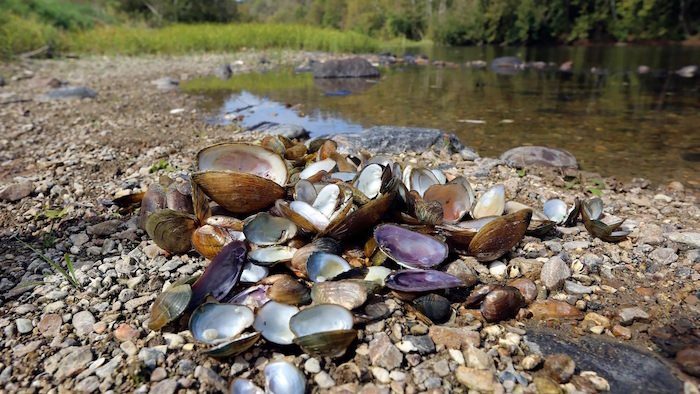
This witness was not aware that "Finding Bigfoot" shot part of an episode in this area years ago. We shot an episode there because there were more reports from that part of Mississippi than anywhere else. One segment involved a witness roughly eight (8) miles to the east of this 2012 incident location, over near Camp Shelby.
I looked at various maps of Black Creek, and I remembered some things from that shoot (eg slow moving creeks), which prompted me to ask a key question related to why it may have done this defensive territorial display (thrown object) rather than just backing off:
Are there lots of fresh water mussels in Black Creek (between Purvis and Hattiesburg)?
He said he wasn't sure.
I asked if he ever saw little piles of shells around there.
An aunthentic light bulb went off, as he remembered seeing small piles of shells a few times along the creek and it puzzled him because "nobody ever goes down there".
He already knew that raccoons don't collect things like this and carry them all back to one place to eat them. Raccoons do have little hands and can even carry things on two legs, but they eat their catches not far from where they catch them.
Bigfoots will collect and eat fresh water mussels. They will collect them and leave these little piles of shells behind.
No small creature is making dozens of trips to carry various size mussels back to one spot one at a time, not to store them (very perishable) but rather to eat them. This is done by something that can collect and carry an armful of mussels at a time.
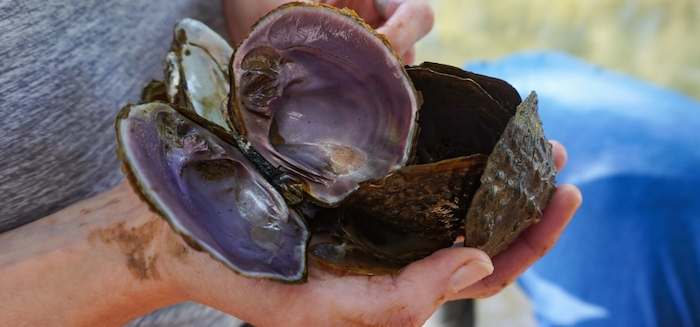
________________________________________________
Looking for these types of clues and evidence is something non-scientists can do. Looking for piles of mussels along key creeks while drifting down the creek in a canoe, is something even boy scouts can do.
This leads me to make another recommendation for a very cool Eagle Scout Project, and what should be a new Merit Badge. This Merit Badge for GoPro expertise. It is a tool for documenting outdoor events, explorations and experiences.
Here's the project for 2-4 Eagle Scouts:
Document all animal encounters and the many different animal alarm and bird alarm sounds along a 10 mile section of slow moving squatchy creek. Document the sights and sounds and encounters along a whole stretch. Document it from every angle in 4K with stereo sound.
Rig up one or two, two-man canoes with enough GoPro type cameras attached to capture every camera angle as you silently float down Black Creek for 10 miles through the swamps north of Purvis.
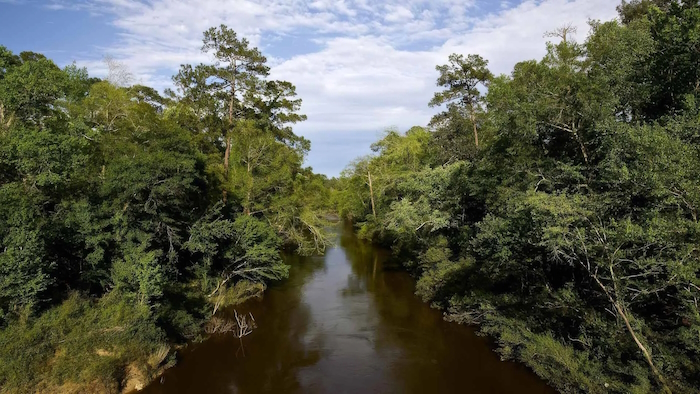
Be as prepared as a scout should be to go through or around any obstructions (ie bring electric chain saw), while still carefully allowing the GoPros to capture everything that happens around you. The encounter may be over with before you can aim your regular camera, and it may come from more than one direction at the same time.
At least I will watch that video and listen to it very, very carefully all the way through. There's a lot of relevant things it can capture in a place like this if you can slip through it silently.
If you live around Hattisburg you could do this canoe trip in one day If you rise early enough.
The camera count:
- Every scout would want a GoPro attached to head.
- Four camera attached to each canoe, to record video in each direction.
- One camera mounted on the canoe(s) for each person on the trip, aimed at their separate faces.
So up to eight cameras.
The routine you must get smooth with is swapping out batteries and SD cards, when it comes time to do so, so there are a least a few cameras running at all times. You have to practice this, and figure out your own methods for swapping batteries and cards as quietly as possible. Don't start figuring it out on the big trip. Do a test run in a backyard pond.
Getting the Go Pro type cameras together, and the attachment accessories, and the SD cards, and then testing the cameras on the canoe(s) before the big trip ... will take more days. But once you've "rigged" a canoe with cameras the first time it will be quick and easy to set up next time. At that point, you would be hire-able by TV show crews passing through the area, because this is exactly what they do for their action shots on their travelling shows. They use Hi-Def GoPros and lots of devices for attaching them to basically anything.
Take my advice as someone who has worked on TV shows in these enviroments ... don't forget to attach a little floater thing to each GoPro that you clamp on to the rail of a canoe. Otherwise you will lose some in a muddy creek and you won't be happy about it.
Once you have that canoe rigged up and tested and ready to roll, all you have to do (for most of the trip) is to lay back and be as quiet as possible you drift along silently.
Yes, some people have a lot of trouble just being quiet and listenning. Don't be that guy.
The public benefit of this Eagle Scout Project is your publicly available record on YouTube of all the sights and sound that whole 10 mile stretch of creek (broken up into episodes).
It is a stretch of creek known to have fresh water mussels. Among other purposes, your cameras will be documenting where there are, and where there are not, little piles of mussel shells on the banks of the creek.
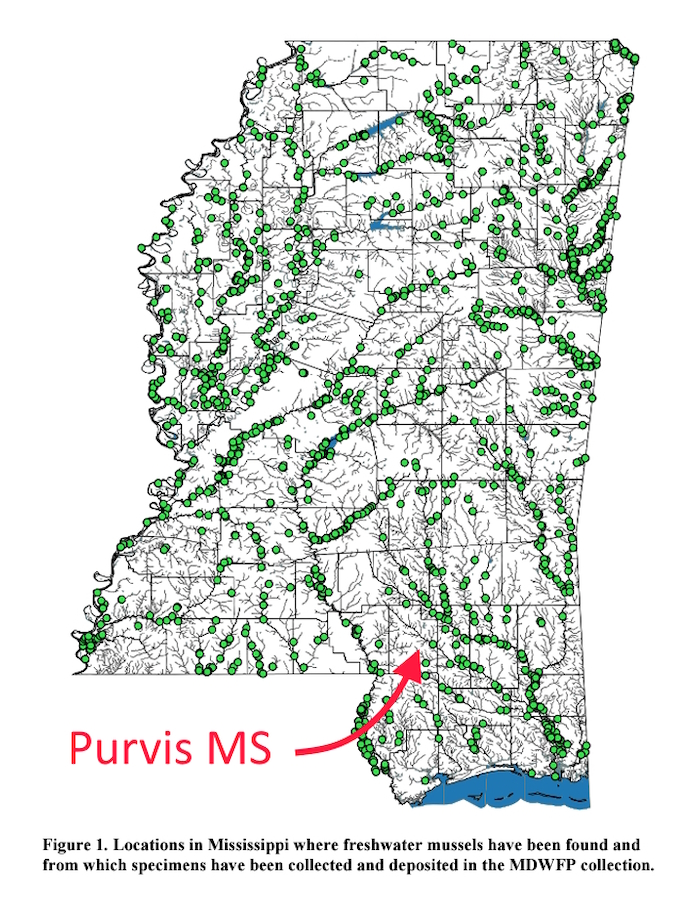
There are many other scientifically useful purposes for that same collection of video and audio -- uses you won't be aware of until you publish the footage publicly. You will see that others make use it. Others will study and make use of the sound clips you recorded along the way, if nothing else.
Think how many uses people make of Street View in Google Maps. You are gathering enough video and audio for an audio augmented "Street View" of a wild spooky creek for others to peruse, possibly years from now. It is historical, ecological documentation that be referenced by biologists and government natural resources officers.
The straight line between the canoe put-in near Hwy 589 and the take-out on Old Hwy 11 is 6.26 miles, but the creek path is so folded and meandering that it easily stretches out to 10 miles of waterway.
These shell piles are not always right on the banks of a creek. Sometimes they are found back in the woods up to 50 feet away from the creek. Cameras are only going to document the shell piles that are visible from the waterway.
Cliff Smith, the witness, says he thinks that whole stretch is canoe-able "except for some rough sections".
Sounds more and more like a mission for some Eagle Scouts.
The image below is the cover of a government publication with compiled scientific studies of fresh water mussel populations specifically in the state of Mississippi. It is a thick document. I was amazed how it changed my perception about that potential food source for bigfoots. There are 84 different species of fresh water mussels, of various sizes and abundance, in Mississippi alone.
You will read a lot about fresh water mussels being on the decline in much of the country. That is very true for *some* of the 84 different species of mussels in Mississippi creeks, but not all. Mussels are still a readily available protein source that does not run away, and most Mississippi creeks are still loaded with them.
Mississippi, or the South in general, does not have a monopoly on fresh water mussels. During BFRO expeditions over the past 20 years we have found these little piles of mussel shells along creeks and rivers as far north as central Wisconsin.
Fresh water mussels are very easy to find even if the water is not clear. If you walk barefoot in the creek you will feel them under your bare feet, especially when walking over a bed of them.
Who follows the creeks? Who walks barefoot in the creeks?
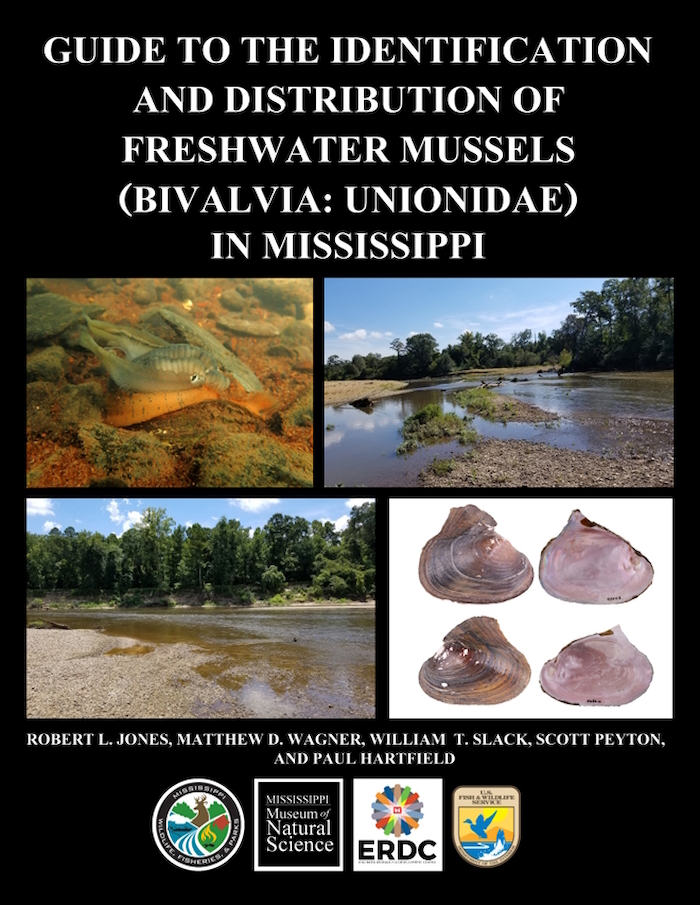
Humans do not collect fresh water mussels because they do not taste good (especially raw), and especially compared to salk water mussels and clams.
It is also ILLEGAL to collect fresh water mussels in Mississippi (and in most other states) ...
Those two things combined should tell you it is not humans collecting those mussels in these lonely swampy creeks.
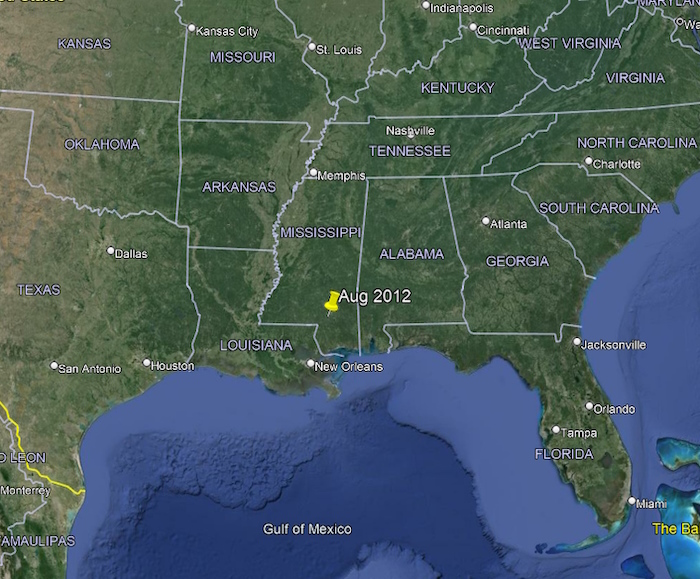
|
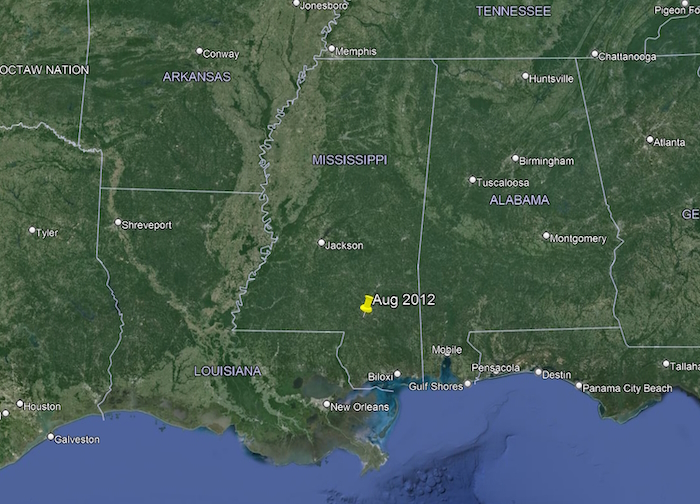
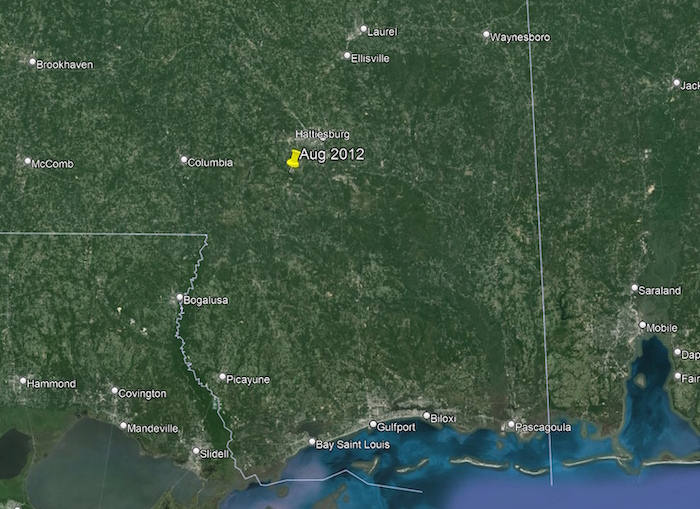
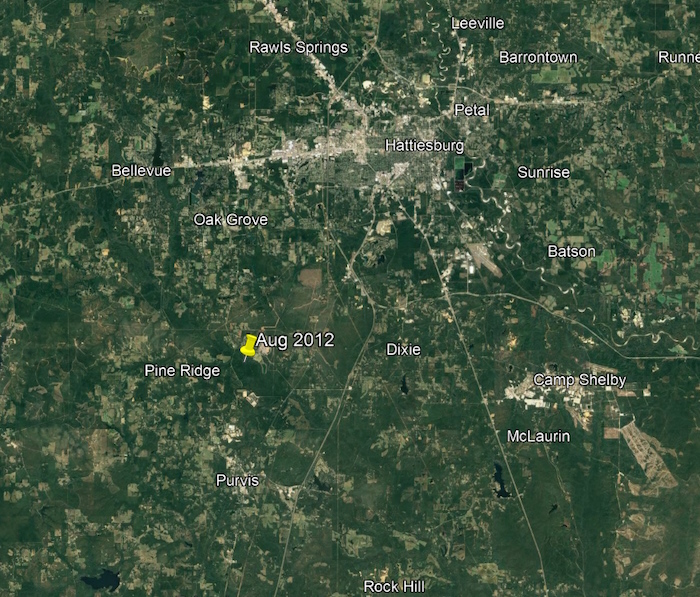
You can click all the images below for larger versions.
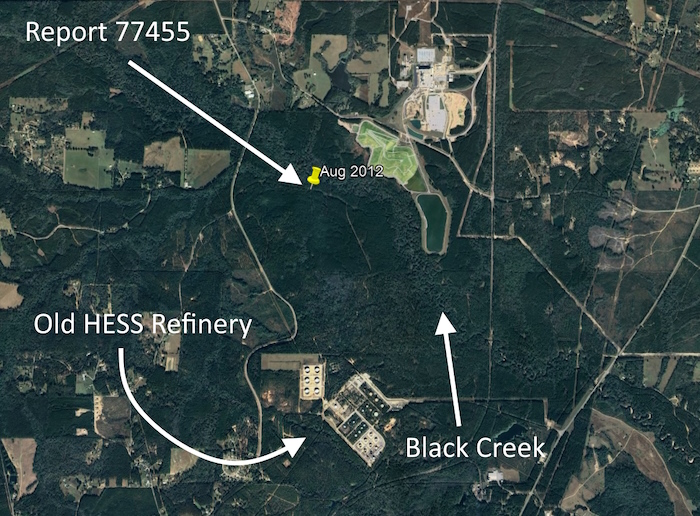
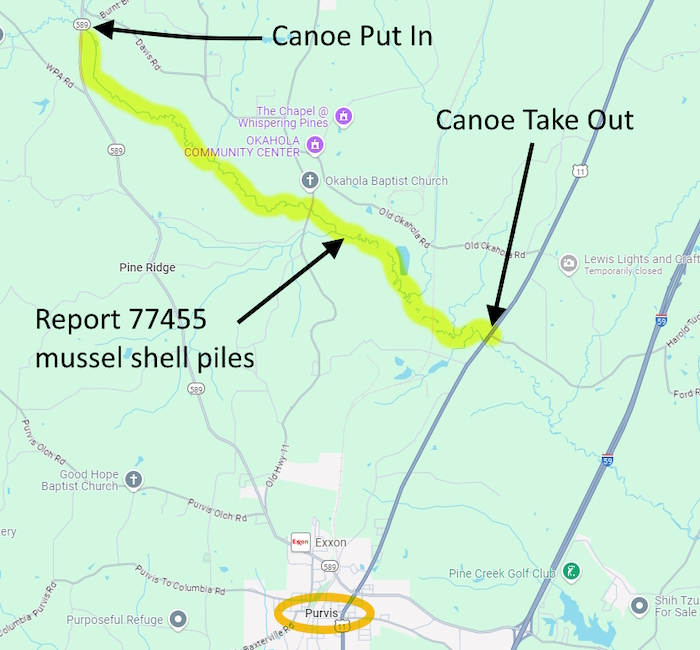
.
.
About BFRO Investigator Matthew Moneymaker:
Matthew Moneymaker is originally from the Los Feliz District of Los Angeles, California.
- Bachelor of Arts in English Literature from the University of California at Los Angeles (UCLA).
- Juris Doctorate (Law degree) from University of Akron School of Law
- Founder of the Bigfoot Field Researchers Organization,1995.
- Writer and co-producer of the Discovery Channel documentary "Sasquatch: Legend Meets Science", 2001.
- Co-producer of the TV Series "Mysterious Encounters" for the Outdoor Life Network (OLN Channel), 2002.
- Producer of the "2003 International Bigfoot Symposium" (Willow Creek Symposium) DVD set, 2004.
- Co-host of "Finding Bigfoot" on Animal Planet Channel, 2010 - 2017.
- Current Director of the BFRO
- Available for private bigfoot expeditions and conferences. To inquire please email ContactUS@BFRO.net

|

































